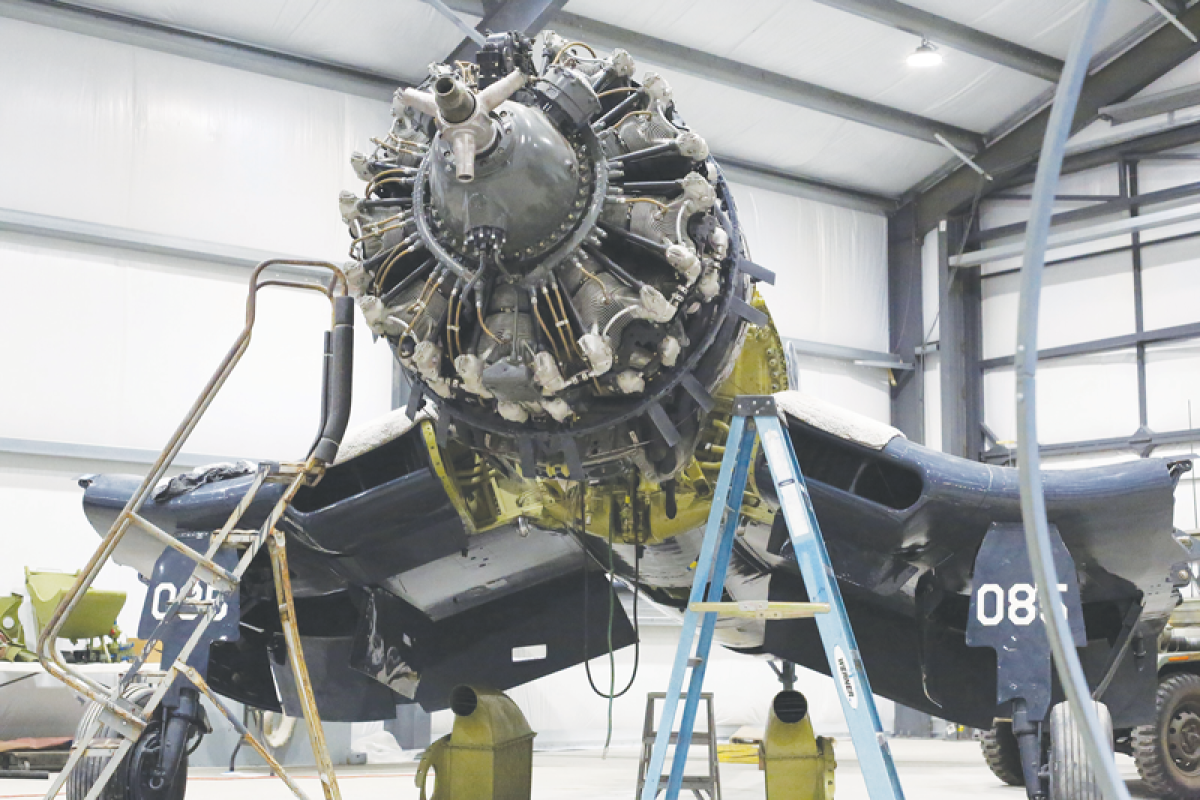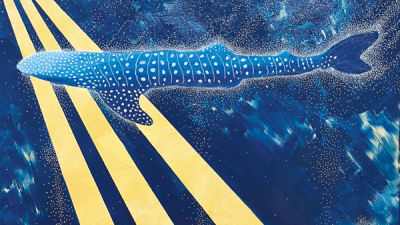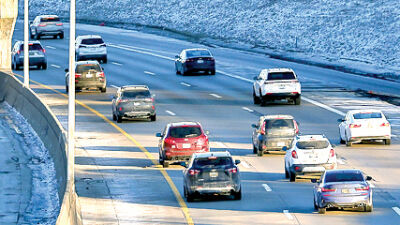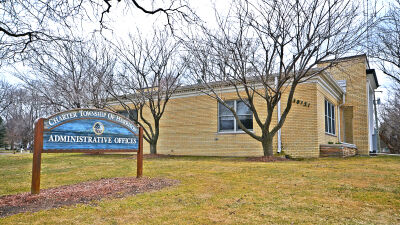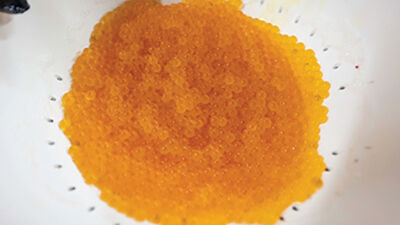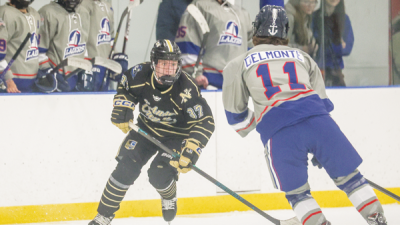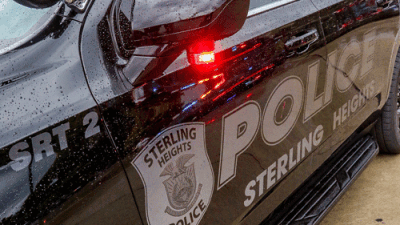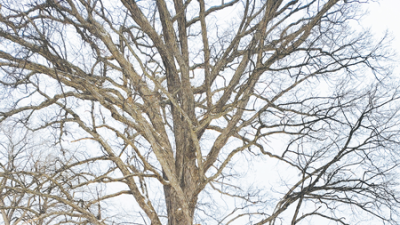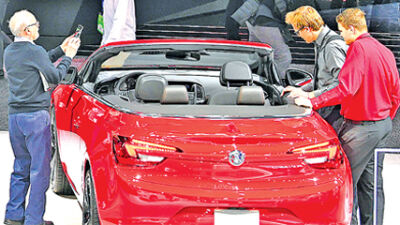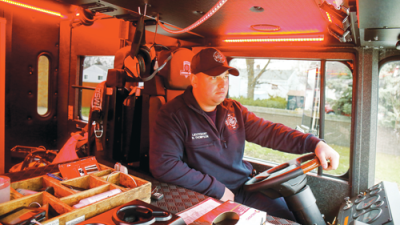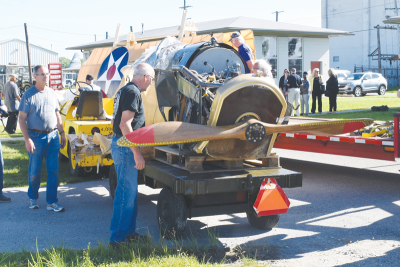
The Curtiss JN-4 Jenny as it arrived at Selfridge on Aug. 11, 2023. Volunteers unloaded the broken plane as it arrived by truck, just as the base’s first JN-4s arrived in 1917.
Photo provided by Selfridge Military Air Museum
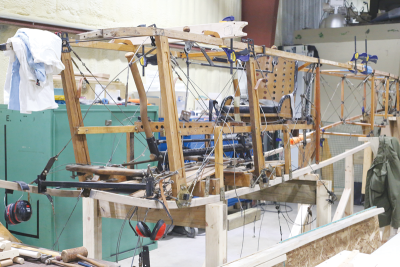
Lacking its cloth skin, the fuselage of the Curtiss JN-4 Jenny reveals its wood beam and metal cable innards. The plane’s prior owner was able to bring the 110-year-old plane into airworthiness before it was broken during a hard landing in 2023.
Photo by Dean Vaglia
HARRISON TOWNSHIP — At one time they were the knights of the skies, and soon they will be teachers from the ground.
The Selfridge Military Air Museum, at Selfridge Air National Guard base, is restoring two historic planes: a Vought F4U Corsair and a Curtiss JN-4 Jenny. While both planes will share a hangar for static display and are expected to be completed this autumn, their histories before coming to the Selfridge museum could not be any more different.
Although the Corsair was built for combat in the Pacific theater, design issues meant it would serve much of the war as a ground-based fighter for the Marines before it was ready for carrier-based duty for the Navy. Corsairs remained in service and production into the 1950s but were replaced by jet fighters by the end of the decade.
The phasing out of the Corsair saw one arrive at Selfridge. Although it never served in combat, the military did not give the plane an easy life in retirement.
“The plane came to the museum in the middle 1970s, and before that it was used as a gunnery target out at the Army proving grounds in Mesa, Arizona,” said Steve Sibal, Corsair restoration team leader. “It was pretty shot up when we received it. The Navy on the base here did a quickie restoration. Primarily they filled all of the bullet holes with automotive body filler, quick and dirty job, threw some paint on it and it was then parked outside for 35 years.”
After the Marines told the museum to either fix the Corsair or kiss it goodbye, work began in 2014 to properly restore it in a presentable state. Small teams of volunteers — nine working at most and currently five — have spent the past decade taking the plane apart, sourcing or fabricating new parts and are now putting everything back together.
“Part of the difficulty we’re running into now trying to put the plane together is in 2014 and 2015, as we started disassembling the aircraft, there were a number of people involved with (disassembly) that are no longer here,” Sibal said. “As a result, we’re learning how to put this airplane back together. Primarily by looking at drawings, just trying to figure it out.”
Recently, the team has incorporated 3D printing into its fabrication process. Parts, such as rudder pedals, have been 3D printed by volunteer Fred Joyner.
Although the Corsair was never stationed at Selfridge, the final plane will be modeled after one used by VMFA-251. The Marine fighter squadron flew Corsairs out of the Philippines in World War II and was later based out of Grosse Ile. Three mannequins will accompany the plane: one as a pilot, and two as ground crew members maintaining the engine and loading the plane’s guns.
Sharing the hangar with the Corsair will be the Jenny, which is a Selfridge plane through and through. Curtiss Jenny aircraft were mass produced in the early 1900s and used as trainer planes, going on to teach Selfridge’s first pilots how to fly in 1917.
Selfridge’s Jenny originally visited the base in 2022 for that year’s airshow under the ownership of Dorian Walker, who restored the plane to an airworthy state and took it to shows around the country. Museum staff left a good impression on Walker while he was in town, which worked in the museum’s favor after Walker and his copilot suffered a hard emergency landing outside of Bowling Green, Kentucky that broke the plane. Walker offered the plane to the museum for $65,000. Although the museum raised funds to reach Walker’s price, it was a donation from FreeStar Financial Credit Union that helped bring the pioneering airplane back to the base.
Under the watch of Fred Lobeck, the Jenny restoration team leader, volunteers peeled away the fabric body, wholly unprepared for what damage lay beneath the buff-colored cloth.
“Once you got the fabric off, then you could find out all the damage that was underneath,” said Fred Lobeck, Jenny restoration team leader. “We found a lot of broken cables.
The wings and the fuselage are being built separately by a team of eight people. Woodworking and cloth-stitching are the primary tasks being performed, with each volunteer playing a part to restore the plane to be as cutting edge as it was in the 1910s.
“It’s going to be designated as a Selfridge Air Force Base plane to replicate what was here originally,” Lobeck said.
Neither plane will be airworthy once finished, but both the Corsair and the Jenny are expected to be completed and dedicated this September.
For more information on the museum, visit selfridgeairmuseum.org.
 Publication select ▼
Publication select ▼